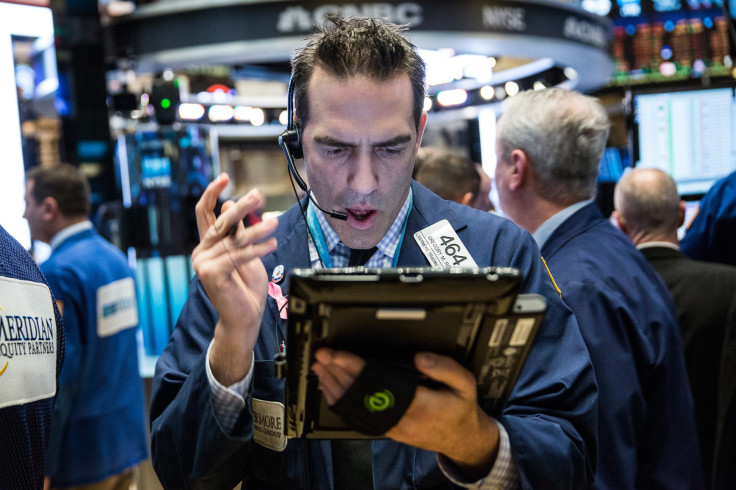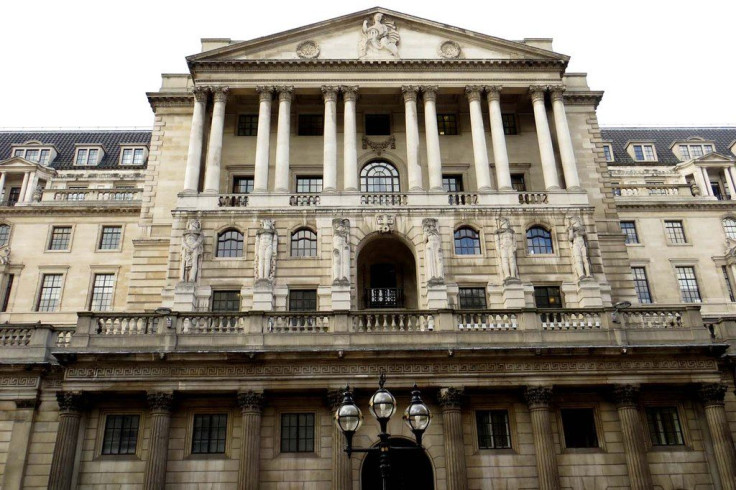The Next Financial Crisis Could Be Predicted By A Smarter Economic Model, Experts Say

What if ecologists who study food webs and epidemiologists who study disease outbreaks could help central bankers predict the next financial crisis? That idea isn’t so far-fetched to some economists who want to adapt a widely used scientific strategy to monitor the global economy.
A group of financial experts, including the chief economist of the Bank of England, issued a call to action Thursday in a major scientific journal asking scientists for help in building a better economic model.
Specifically, they want to incorporate complexity theory, which is already used by scientists to understand webs and systems in physics, computer science, biology and epidemiology. The model they hope to create will allow regulators and central bankers to forecast the impacts of new policies and possibly even anticipate the next financial crisis.
“Truth be told, the workhorse model in economics and finance, God bless it, does come with some strong simplifying assumptions, some of which mean it's not often well equipped to deal with situations of stress,” Andy Haldane, chief economist at the Bank of England who co-authored the proposal in Science, said.
Complexity theory is the idea that systems have organizing principles that can be expected to perform in a consistent way. It already guides scientists in making weather predictions and in identifying “superspreaders” of disease. From the climate to ecosystems, experts have identified common rules that seem to govern these networks.
“It's about the notion that the interaction of simple parts can give rise to behaviors that are qualitatively different than the parts themselves,” said J. Doyne Farmer, a co-author and former physicist who now studies complex systems at the Santa Fe Institute. “Those simple systems could be the neurons in your brain or ants in an anthill or, in this case, the actors in an economy and financial systems.”
One common rule is that complex systems often show signs of weakness just before a major collapse. Climate change is one example as temperatures have steadily risen over decades. Or think of the food web, in which the survival of one species relies heavily on the health of another. The economy is similar, though its strengths and weaknesses are not always so obvious.
Farmer says the sting of the 2008 financial crisis has created fresh interest in applying complexity theory to the economy. When the global financial system collapsed, none of the traditional economic models saw it coming. “It's made central banks very aware because they felt like they were left without any useful quantitative tools,” he said. “The models weren’t even good enough to be wrong.”
This oversight points to a fundamental error in traditional economic models — they rely on data meant to approximate the actions of a single rational individual or average person. But the economy is not comprised of average people acting rationally and independently. Relying on models that assume so makes it difficult for experts to see what’s really going on.
“They are still based on the idea that you could model the whole macro-economy with an average economic agent,” Cars Hommes, a co-author and economist at the University of Amsterdam, said. “But for complex systems, that is not the case.”
In particular, traditional models have largely failed to account for the interactions between people or institutions. They don’t have any way to measure phenomena such as positive feedback, which is when a slight disturbance in a system causes a domino effect that sends it spiraling out of control. For example, a few spooked cattle can create a stampede; likewise, the stock market might crash if investors panic and sell shares based on the speculation of a few.
Hommes said the new-and-improved model would be agent-based, which essentially means it would have many players instead of just an average. Developers would assign special characteristics to each person and create values for all the decisions those individuals could possibly make. An algorithm would point to each person’s most likely decision in a given situation.
So why hasn't such a useful model already been built? Hommes said a recent flood of psychological and behavioral research on subjects such as herd mentality has finally made it possible. Still, the group said in its proposal that it needs more data on how banks share information and interact with each other.
Dennis Kelleher, president and CEO of the nonprofit Better Markets, said he is pleased that economists are thinking about how to improve their work, but warns placing too much faith in any modeling products could backfire. “Anything the economics profession does to actually reflect and be self-critical is to the good,” he said. “On the other hand, having more complex models which drives economics more into math and increases the false illusion of science upon which confidence is built, is going to ultimately undermine itself again.”

Once the model is in place, the group says policymakers could try out new policies before introducing them in real life. For example, if a nation was weighing a consumption tax versus an income tax it could plug those in and observe their effects. However, the model would still face some of the same limitations that current versions run up against, such as finding data on financial activity in shadowy areas of the economy.
One estimate from Deloitte suggests “shadow banking” in the U.S., a term for financial services offered by institutions other than federally insured banks, including hedge funds and online mortgage lenders, held $9.2 trillion in assets in 2013. A 2015 estimate from the Center for Financial Stability put the number more recently at $4.13 trillion. The traditional banking system claimed $19.3 trillion in assets in 2013 but has at times been dwarfed by outside institutions.
Kelleher of Better Markets thinks there is promise in applying complex systems theory to economics but that doing so shouldn't distract from the financial industry's ability to make changes now. "Do we need to know that complex financial instruments that literally no one understands could conceal embedded risks?" he said. "No. Most of the things we need to know to make the system safer, stronger and more resilient, we already know."
If all goes as planned, the model might eventually develop a predictive quality. If bankers suddenly begin issuing the same type of low-quality loan, or shareholders start to divest all at once, it could tip users off to a potential collapse. In fact, one retrospective model that looked for early warning signs of the 2008 crisis in the Dutch banking industry found that the industry began to slip from a state of equilibrium three years prior to the crisis’ start.
“We hope you could monitor the financial system and be able to have a risk dashboard to see when a systemic risk was building up and when the world’s financial system was entering into a dangerous zone where another crisis could occur,” Farmer said.
History is littered with failed attempts to predict financial markets and creating such a model would not be easy or straightforward. But several pilots already exist, including two for housing and financial markets currently in use at the Bank of England. Haldane is optimistic and thinks other central bankers will be eager to incorporate new models into their work.
“The weather forecasters have made great strides forward in their forecasting ability, at least in the one to two week timeframe,” he said. “I think what is true in weather is also likely to be true in finance and the economy.”
Hommes said the comprehensive model they envision would likely require five to 10 years to perfect. Farmer estimated it might cost $10 million to launch, which, as the team points out in its proposal, is far less than the cost of another financial collapse.
© Copyright IBTimes 2024. All rights reserved.












